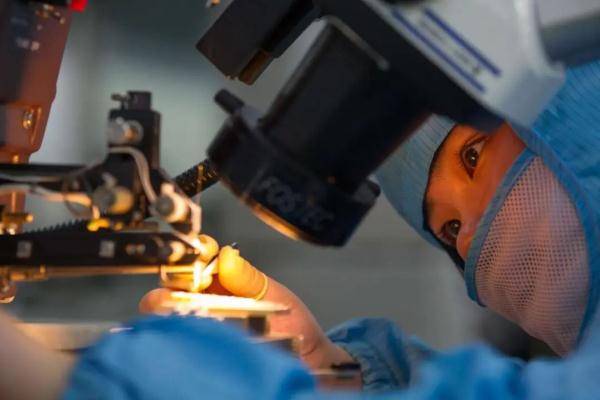◎ Wu Chunxin Science and Technology Daily reporter Liu Zhiwei, correspondent Zhu Yongjin Qiu Jianshan
On June 20th, in the Hongtuo Ultrafast Laser Joint Laboratory of Wuhan Future Science and Technology City, the curve on the laser pulse oscilloscope kept beating. Cao Xiangdong, director of the laboratory, told the Science and Technology Daily reporter that their femtosecond laser antivirus device has just been verified by the State Key Laboratory of Virology at Wuhan University and can instantly kill all kinds of viruses and bacteria, including the new coronavirus.
Femtosecond laser anti-virus is a “new technology” launched by Hongtuo Laboratory in response to the possibility of frequent viruses harassing humans in the future. Cao Xiangdong said that this technology can change the way traditional chemical agents kill viruses. It can not only kill completely, but also work online, so that doctors and patients do not need to leave the ward.
“The femtosecond laser is a kind of pulsed laser. The femtosecond is a quadrillionth of a second. The femtosecond laser is the fastest among ultrafast lasers. Its biggest characteristic is’cold’.” Cao Xiangdong said, as a “cold laser” “It has completely broken the boundaries of laser applications in the past. It can do both fine work and rough work. Such as “corneal surgery”, “chip etching”, “online inspection”, “drilling shield excavation” and so on.
The staff processes the components under the microscope.
In 2008, the femtosecond laser research was “small lotus only showing its sharp corners” in developed countries. Cao Xiangdong returned to China and established his own laboratory in Wuhan.
After more than ten years of hard work, the Cao Xiangdong team finally achieved a major breakthrough in the five core technologies of ultra-high-precision dispersion compensation, mode-locked chips, nonlinear amplification, all-fiber integration, and optical fiber transmission. The core technology is independent and controllable.
As one of the nine “root technologies”, femtosecond laser technology will play a major role in the frontiers of science and technology such as big health, big infrastructure, new energy, and quantum information.
Some experts believe that the budding of femtosecond laser here is just like the beginning of optical communication in Wuhan.
In 1971, driven by the efforts of Chinese scientist Kao Kun, the world’s first 1 kilometer long optical fiber came out. Zhao Zisen, a scientific and technical staff member of the Wuhan Academy of Posts and Telecommunications, tried thousands of times in order to prove that “communication with small glass filaments is not a fantasy”, and finally pulled out the first optical fiber in our country using the “local method”.
This was 1976, only five years after the birth of the world’s first optical fiber. At that time, it was considered the closest breakthrough to the frontier of the world. This 7-meter-long glass filament has since rewritten the history of China’s communications and has also changed the orientation of Hubei and Wuhan.
In 2001, the National Optoelectronics Industry Base settled in Wuhan, and Wuhan·China Optics Valley was born. Sitting on the technical advantages of optical communication, Wuhan took the lead in implementing the pilot project of “fiber-to-the-home and three-network integration” in the country, and then promoted it to the whole country, so that the people of the country can share the smooth travel of the network. In 2016, YOFC’s three main businesses of preform, optical fiber and optical cable all ranked first in the world. In the past 30 years, YOFC has produced nearly 700 million core kilometers of optical fibers, which are connected end to end, enough to pull the shortest distance from the Earth to Mars 6 back and forth. In recent years, cloud computing, big data, mobile Internet, and Internet of Things applications have rapidly emerged. How to solve the problem of “blowout growth” of network data flow has become a high ground for competition in the global information and communication field. As the leader of my country’s optical communication technology, China Information Technology Group has continued to make major technological breakthroughs in the field of “ultra-large capacity, ultra-high speed, and ultra-long distance” optical communication transmission. In 2017, they achieved 13.5 billion simultaneous calls on a single fiber. Today, they have achieved a fiber that can accommodate 30 billion people at the same time, leading the way. After years of cultivation, Hubei Province has a batch of “new technologies” grown from “root technologies”. It owns head technology companies such as China Xinke, Raycus Laser, Yangtze River Storage, and Renfu Pharmaceutical. They have provoked the important task of innovation in “optical core screen terminal network”, “life health” and “biological breeding”, and are making great strides towards the future. “Deep roots can make leaves grow stronger”, the person in charge of Hubei Provincial Science and Technology Department stated that only by accelerating the cultivation of “root technologies” and “new technologies” with strong vitality can the construction of Hubei be a science and technology province and continue to inject new momentum into Hubei’s high-quality development. More news: What is root technology? Root technology refers to a common technology that has a significant impact on multiple industries at the same time, and its characteristic is that it spans all walks of life. Measured by root technology and root industry standards, experts believe that the nine aspects of the Internet of Things, 5G networks, AI, fusion energy, 3D printing, gene editing, femtosecond lasers, quantum computing, and bioengineering are now and for a long time in the future. Root industry. Source: Photo courtesy of interviewees of Science and Technology Daily Editor: Zhang Shuang Review: Yue Liang Final review: He Yi

You must log in to post a comment.